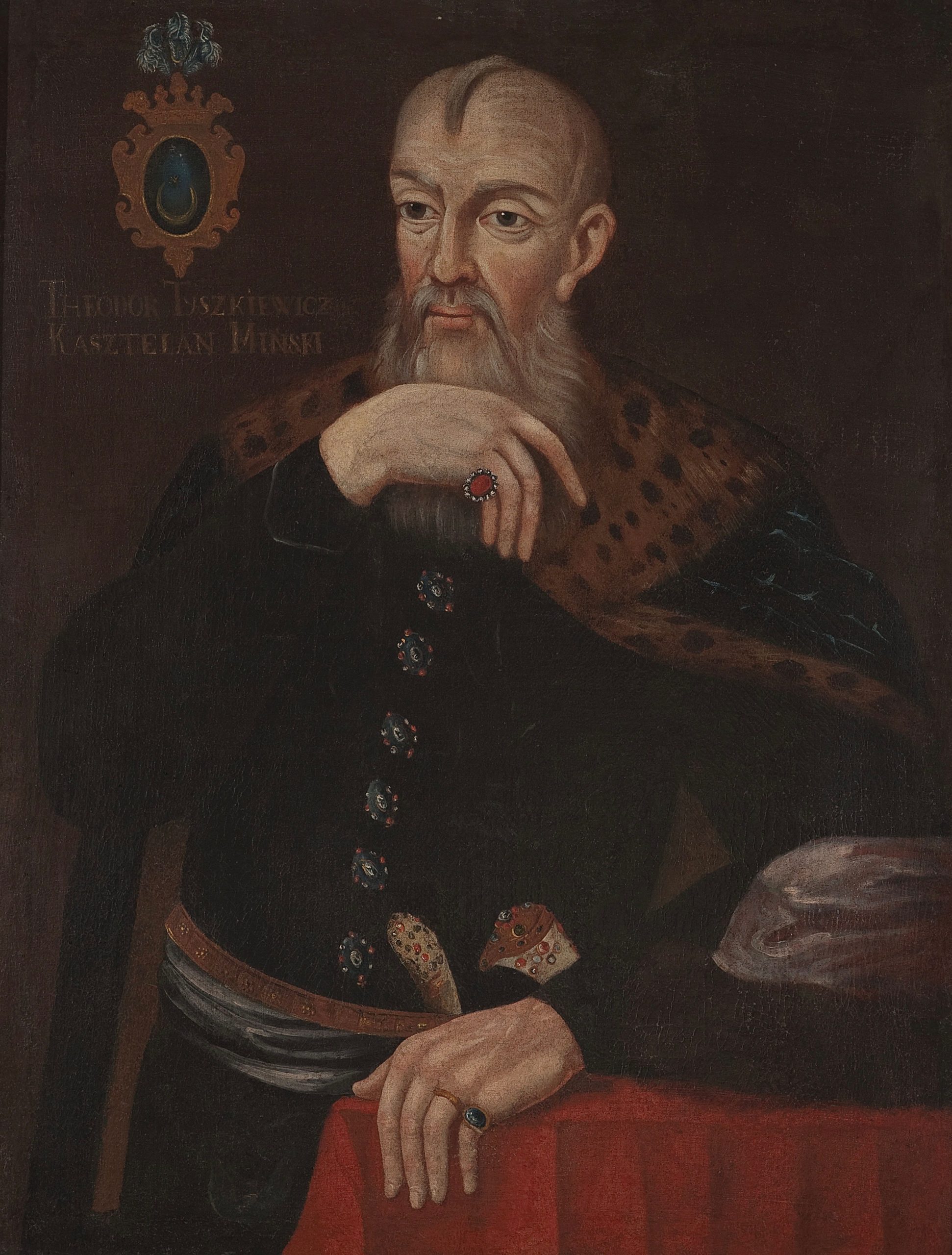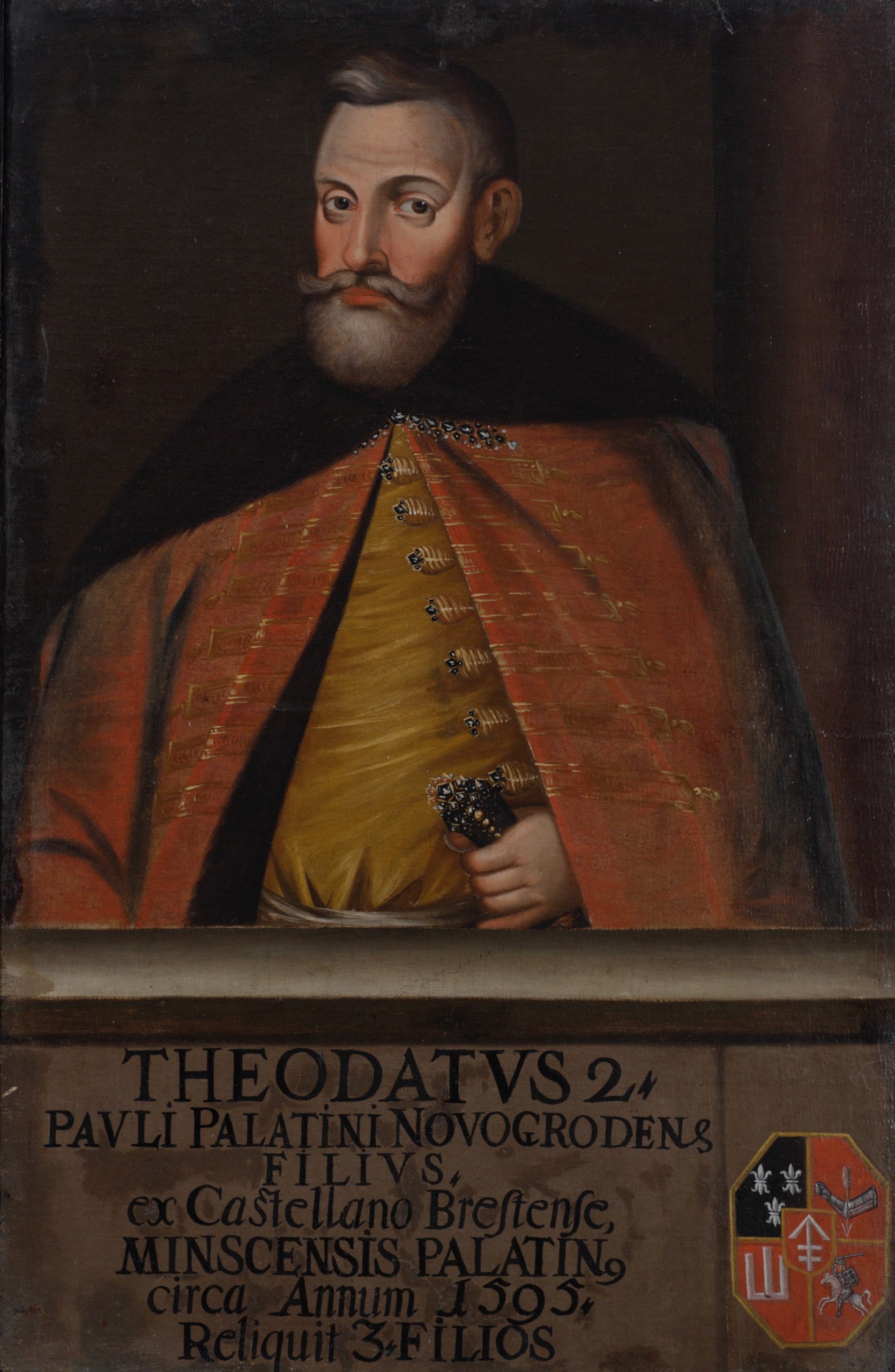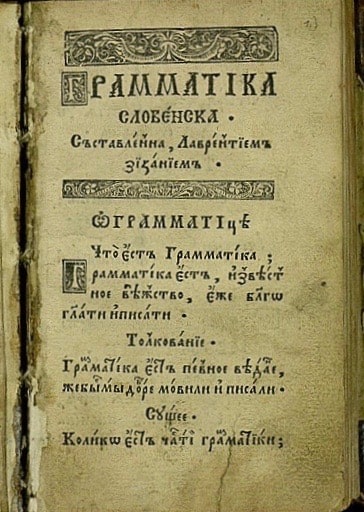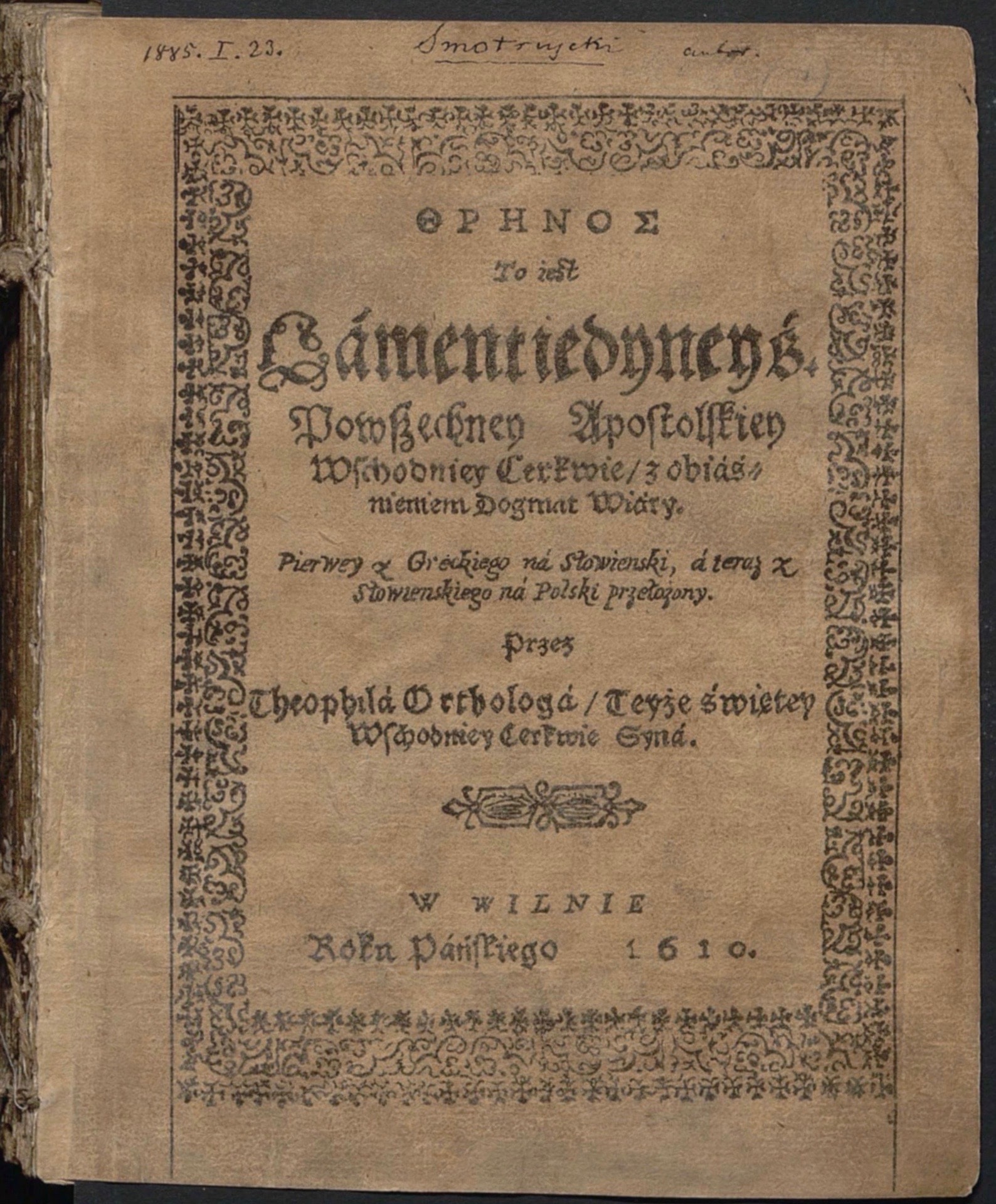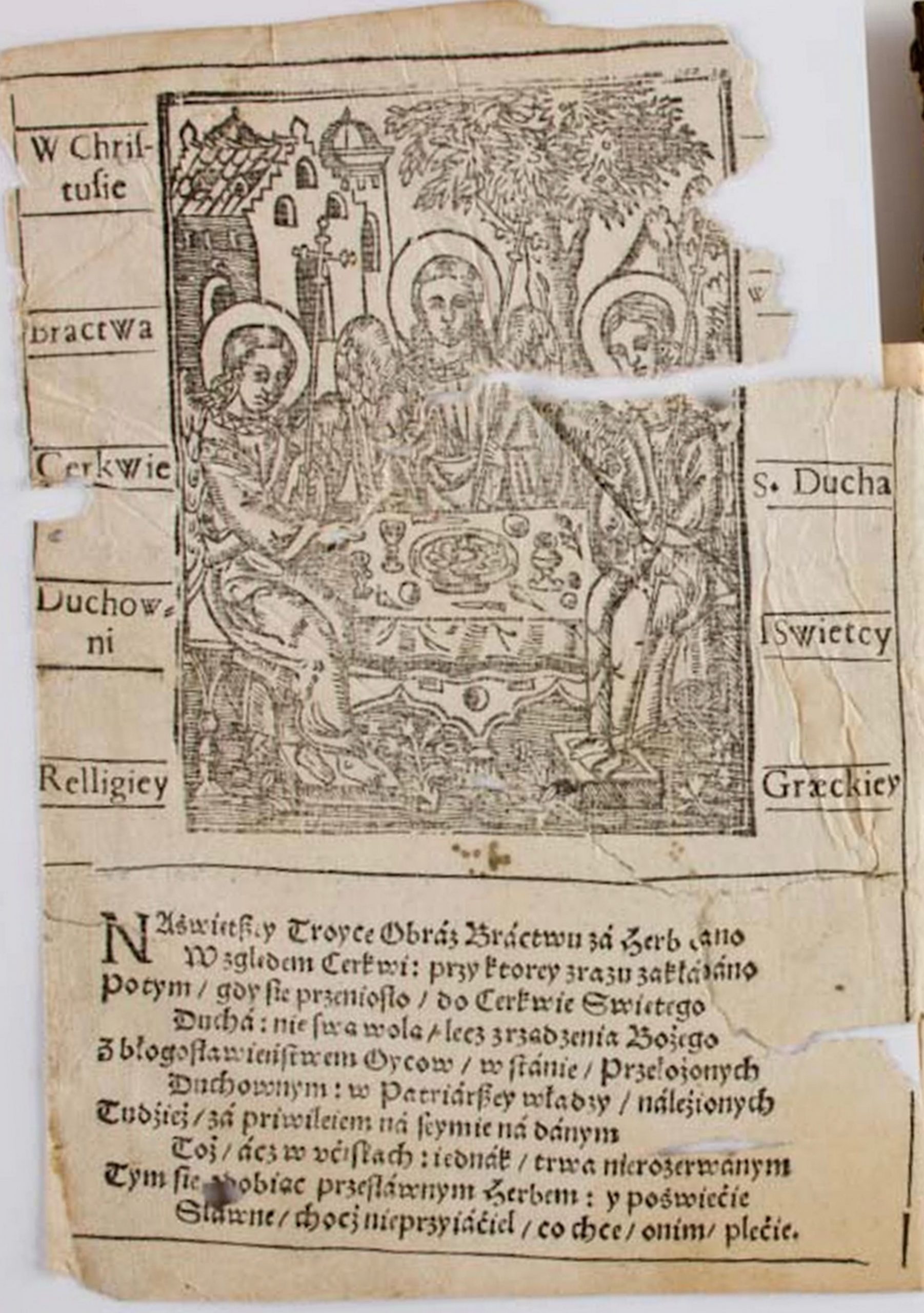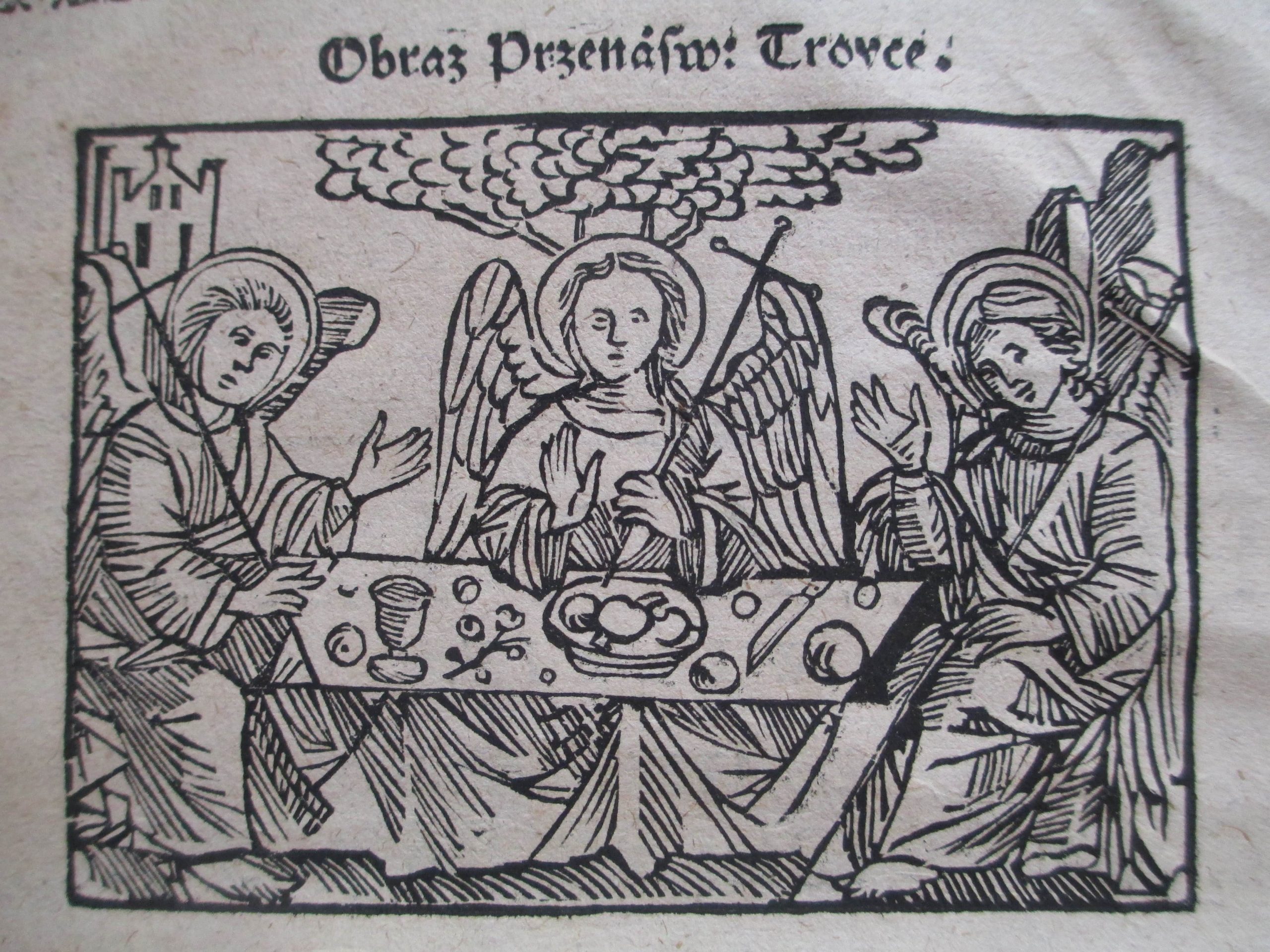According to modern conceptual principles, church brotherhoods of the Kyivan Metropolitanate are treated as lay organizations of the Church. Holy Trinity Orthodox Brotherhood, established in the 1580s, together with the Lviv stauropegion, played a leading role in the brotherhood movement on the territory of the Grand Duchy of Lithuania and Ukrainian lands. The influence of this institution reached far beyond the limits of the capital city. The Holy Trinity organization of laymen significantly influenced the sacred space of early modern Vilnius. Its history is probably one of the most outstanding examples of religious-cultural life of the time.1Darius Baronas, “Stačiatikių Šv. Dvasios brolijos įsisteigimas Vilniuje 1584–1633 m.”, in: Lietuvių katalikų mokslo akademijos metraštis, t. 36, serija B: Bažnyčios istorijos studijos, t. 5: Religinės bendrijos Lietuvos istorijoje: gyvenimas ir tapatybė, 2012, p. 47–97.
The oldest document which reports the existence of the Vilnius church brotherhood is the register of its members, generally dated 1584, probably in use until the end of the century (it numbers 386 people).2“Реестръ уписованія братій братства церковного Святои живоначальнои Тройцѣ, олтаря Стрѣтенія Господня, въ мѣстѣ виленскомъ, року отъ воплощенія Господа Бога и Спаса нашего Іисуса Христа, 1584”, in: Чтения в Императорском Обществе Истории и Древностей Российских при Московском Университете, кн. 3, Моксва: Университетская типография, 1859, с. 29–40. A record listing the blessing of Metropolitan Onysyfor Diwoczka for the brotherhood is preserved, dated 12 June 1587, in which the brothers’ “book” is mentioned, approved for publication.3Описание документов архива западнорусских униатских митрополитов, ч. 1: 1470–1700, Санкт-Петербург: Синодальная типографія, 1897, с. 54. An old printed copy of the statues, however, has not been preserved. However, a number of synchronic and later sources confirm the existence of an old printed copy in the 16th, 17th, and even 18th centuries, moreover not only on the territory of the GDL.4Леонід Тимошенко, Руська релігійна культура Вільна. Контекст доби. Осередки. Література та книжність (XVІ – перша третина XVII ст.), Дрогобич: Коло, 2020, с. 181–189.
An analysis of the foundational and administrative documents of the 16th century proves the stauropegial character of the Vilnius brotherhood, but with certain differences. So, in the sources the rules for choosing priests for the brotherhood are not mentioned; on the other hand, members of the Vilnius brotherhood could be women. Also absent are norms regarding reporting and the election of elders for the brotherhood. An important religious function which is not noted in the statutes of other brotherhoods is the principle of materially providing for the church and its maintenance. From all this, it is clear that the Vilnius brotherhood belonged to a patriarchal-metropolitan stauropegion. The statutes of Patriarch Teofan of 1620 makes it possible to establish its relationship with foundational sources of the 16th century. He was able to fully pass on the norms of the statutes of Diwoczka with some later additions.
Members of the Vilnius brotherhood took active part in general church matters. It was among the Vilnius brothers that an original and outstanding text was created, known as an instruction for the people of Vilnius for a hierarchical council of 1594, which was signed by highly-placed brothers, officials, and magnates of the GDL.5Описание документов архива…, с. 76–77. Heading the community were Teodor Skumin-Tyszkiewicz [1], Bohdan Sapieha [2], and others. Wealthy patrons of the Vilnius confraternity donated a number of significant endowments assets to the brotherhood.
The cultural-educational function of the Vilnius brotherhood was realized above all through schooling. Documentary sources on the activities of the brotherhood’s school have been preserved, with the exception of the school’s statutes. The general competitive situation in the capital of the GDL encouraged the development of the school. In the 1590s, brothers Stefan and Laurencjusz Zizanij and also a Greek, Cyril Lucaris, ensured the high level of the Vilnius brotherhood’s school.
The problem of leadership in the brotherhood movement of the Kyivan Metropolitanate generally involved the Lviv brotherhood. Despite this, for a considerable time the Lviv and Vilnius brotherhoods were the only legitimate patriarchal stauropegia of the metropolitanate, whose orderliness was considered exemplary and recommended for imitation by other participants of the brotherhood.
In Vilnius, as opposed to Lviv, only one brotherhood was founded. This can be explained by the fact that the Ruthenian “city” dominated the territory of the center, and parishioners from other parishes, located near Trinity Hill, could join the Holy Trinity community. The compactness of the placement of Ruthenian churches and parishes on the territory of the center of Vilnius obviously influenced the needs of the confraternity.
The publishing activities of the Holy Trinity Orthodox Brotherhood began in 1595, when the following books were published: “Daily Prayers”, “Psalter, Psalms”, and also “Teaching Gospel”. In the 1596, the following books were published: “Slavic Grammar” by Laurencjusz Zizanij, “Psalter, Psalms”, “Horologion/Book of Hours/Breviary”, “Horologion/Book of Hours/Breviary with ABCs”, “Daily Prayers”, “Alphabet: Lessons for Reading” by Laurencjusz Zizanij, “Sayings of St. Cyril” by Stefan Zizanij, “Book on the Faith”, “New Testament with Psalms”, and “Dialogue” by Patriarch Pigas Melecjusz (in the Greek language). A number of books prepared by the Holy Trinity Brotherhood were published in the famous Vilnius printing house of the Mamoniczów (3, 4).
The Vilnius brothers were partially represented at the Orthodox council in Brest in October 1596. In 1597, they left the walls of Holy Trinity Monastery and founded an Orthodox brotherhood at Holy Spirit Monastery.6Леонід Тимошенко, op. cit., с. 356, 384–398.
The activities of the lay community of Holy Spirit in the 17th century were exceptionally important. Study of the statutes of the brotherhood movement led to the discovery of the unknown reception of the Vilnius brotherhood tradition in Lviv.7Ibid., с. 389–390. And so the statutory principles of the activities of Holy Spirit Orthodox Brotherhood were well reconstructed. According to them, this was a lay community fairly different from Lviv’s. This was a typical community in an age when stauropegial brotherhoods were spread, but with not clearly underlined principles of autonomy. In the Vilnius norms, an educational-formation component is not found.
Prominent figures of the age headed the Holy Spirit lay organization (Bohdan Ogiński, Arnold Birikowski, Bohdan Massalski, Adam Korsak, Jan Ogiński, Laurencjusz Drewiński). The brotherhood school had significant achievements. A summary of the development of the Vilnius Orthodox lay organization is included in the privileges of Wladyslaw IV of 18 March 1633.8Собрание древних грамот и актов городов Вильны, Ковна, Трок, православных монастырей, церквей и по разным предметам, ч. 1, Вильно: Типография А. Марциновского, 1843, с. 118. The brotherhood finally achieved legitimization with permission to use the building of Holy Trinity.
In memorial books of 1625 and 1632 there are woodblock print images of icons of the Holy Trinity which were preserved in Holy Trinity and Holy Spirit monasteries [5, 6].9Леонід Тимошенко, op. cit., ілюстрації № 46, 47, 48, с. 779, 780. There are also notable rare prints of seals of Vilnius brotherhoods which also use an image of the Holy Spirit or a patriarchal cross.
It is considered that Holy Spirit Brotherhood was very active in publishing. In fact, here famous polemical works of Melecjusz Smotrycki, considered classics, were published. The creativity of Holy Spirit was also connected with the works of Leonty Karpowicz. Among books published in Vilnius in this period, almost all genres of Cyrillic religious book are represented. In volume, Vilnius book production significantly exceeded quantity indicators of publications of other centers of the Ruthenian religious revival of this age taken together (Zabłudów, Lviv, Ostroh, Kyiv, Kutein, Mogilev). When one considers the repertoire of other Ruthenian centers where a number of religious books were also published, it seems a correct conclusion that the needs of the Kyivan Orthodox Metropolitanate were fully provided for in almost all categories of religious literature.
Vilnius Orthodox brotherhoods maintained close contacts with other centers of the religious-cultural renaissance and lay organizations. Particularly notable were contacts with Lviv’s Dormition Brotherhood, representatives of which, brothers Stefan and Laurencjusz Zizanij, contributed a bright page to publishing activities and the development of preaching in Vilnius Holy Trinity Brotherhood. The Vilnius brothers also had close contacts with the Ostroh Academy. A number of works prepared in Ostroh were published in Vilnius (“The Key of the Kingdom of Heaven” by Herasym Smotrycki, Vilnius, 1587; a circular letter about the journey of Patriarch Jeremiah II, Vilnius, 1589; and others). A number of spiritual representatives of Volyn at the start of the 17th century visited Holy Spirit Monastery in Vilnius.
In 1608, at the initiative of Metropolitan Hypatius Pociej (↑) a Uniate Holy Trinity Brotherhood was established.10Ibid., с. 335. Some notable people joined, including the metropolitan himself, though the community’s activities did not develop. Clearly, circumstances were such that the majority of laity of Vilnius belonged to the Holy Spirit Brotherhood. At the same time, the Holy Trinity lay community did not manage to publish books. It is considered that the single publication of Holy Trinity was the book “A Teaching Which Everyone Must Believe…” in 1628. The Uniates published the majority of their books at the noted press of the Mamoniczów, whose owner transferred to the Union. In the first third of the 17th century, the Holy Trinity Brotherhood published a great number of polemical works, of Hypatius Pociej, Leon Kreuza, and Josyf Veliamyn Rutsky (↑), which are considered classics of Ruthenian religious literature. They made a great contribution to the development of funeral sermons (The sermon of Leon Kreuza at the funeral of Josaphat Kuntsevych, Vilnius, 1625) (↑) (↑) (↑).
Leonid Tymoshenko
Išnašos:
| 1. | ↑ | Darius Baronas, “Stačiatikių Šv. Dvasios brolijos įsisteigimas Vilniuje 1584–1633 m.”, in: Lietuvių katalikų mokslo akademijos metraštis, t. 36, serija B: Bažnyčios istorijos studijos, t. 5: Religinės bendrijos Lietuvos istorijoje: gyvenimas ir tapatybė, 2012, p. 47–97. |
|---|---|---|
| 2. | ↑ | “Реестръ уписованія братій братства церковного Святои живоначальнои Тройцѣ, олтаря Стрѣтенія Господня, въ мѣстѣ виленскомъ, року отъ воплощенія Господа Бога и Спаса нашего Іисуса Христа, 1584”, in: Чтения в Императорском Обществе Истории и Древностей Российских при Московском Университете, кн. 3, Моксва: Университетская типография, 1859, с. 29–40. |
| 3. | ↑ | Описание документов архива западнорусских униатских митрополитов, ч. 1: 1470–1700, Санкт-Петербург: Синодальная типографія, 1897, с. 54. |
| 4. | ↑ | Леонід Тимошенко, Руська релігійна культура Вільна. Контекст доби. Осередки. Література та книжність (XVІ – перша третина XVII ст.), Дрогобич: Коло, 2020, с. 181–189. |
| 5. | ↑ | Описание документов архива…, с. 76–77. |
| 6. | ↑ | Леонід Тимошенко, op. cit., с. 356, 384–398. |
| 7. | ↑ | Ibid., с. 389–390. |
| 8. | ↑ | Собрание древних грамот и актов городов Вильны, Ковна, Трок, православных монастырей, церквей и по разным предметам, ч. 1, Вильно: Типография А. Марциновского, 1843, с. 118. |
| 9. | ↑ | Леонід Тимошенко, op. cit., ілюстрації № 46, 47, 48, с. 779, 780. |
| 10. | ↑ | Ibid., с. 335. |
Sources of illustrations:
| 1. | Held in: MNW, MP 3204 MNW (Available at: Cyfrowe zbiory Muzeum Narodowego w Warszawie, https://cyfrowe.mnw.art.pl/pl/katalog/509077, accessed: 2021 12 01). |
| 2. | Held in: Zamek Królewski na Wawelu, (?) 9160. Published in: Wikimedia Commons, available at: https://commons.wikimedia.org/wiki/File:Bahdan_Sapieha._Багдан_Сапега_(1709).jpg, accessed: 2021 12 01. |
| 3. | Lavrentiy Zyzanyi, Грамматика словенска…, [Vilnius, 1596], p. [А]1. Published in: „Граматика словенська. Лексис“, in: Internet Archive, 2018, available at: https://archive.org/details/gramat0slovenska/mode/2up, accessed: 2021 12 01. |
| 4. | [Meletìj Smotrickij], Threnos To iest Lament iedyney ś. Powszechney Apostolskiey Wschodniey Cerkwie, z obiaśnieniem Dogmat Wiary: Pierwej z Greckiego na Słowienski, a teraz z Słowienskiego na Polski przełożony…, Wilno, 1610, p. [title page]. Held in: BJ, BJ St. Dr. 40951 I (Available at: Jagiellońska Biblioteka Cyfrowa. Uniwersytet Jagielloński , https://jbc.bj.uj.edu.pl/dlibra/doccontent?id=375357, accessed: 2021 12 01). |
| 5. | Józef Bobrykowicz, Kazanie na znamenity pogrzeb Wielmożnego Pana Jego Mości Bohdana Martimiana Ogińskiego z Kozielska, podkomorzego trockiego, Wilno, 1625. Held in: Національна бібліотека України імені В. І. Вернадського; Muzeum Narodowe w Krakowie. |
| 6. | Prawa i przywileie. Od naiaśnieyszych Krolow Ich Moś. Polskich y W.K.L. nadane… Przez Bractwo Wileńskie Przenaświętszey Troycy w Jedności ś. Cerkiewney będące na swiet wydane, 1632. Held in: BN. Similar image published in: ΣΥΝΟΨІΣ [= Synopsis] albo krotkie spisanie praw, przywileiow, swiebod y wolnosci…, [Wilno: drukarnia Bractwa Cerkiewnego], [1632], p. [Av]. Held in: ЛННБ ВР; BN, mf. B9588 (Available at: Polona, https://polona.pl/item/synopsis-albo-krotkie-spisanie-praw-przywileiow-swiebod-y-wolnosci-od-naiasnieyszych-s,MTM4MjA0OTY3/0/#info:metadata, accessed: 2021 12 01). |
